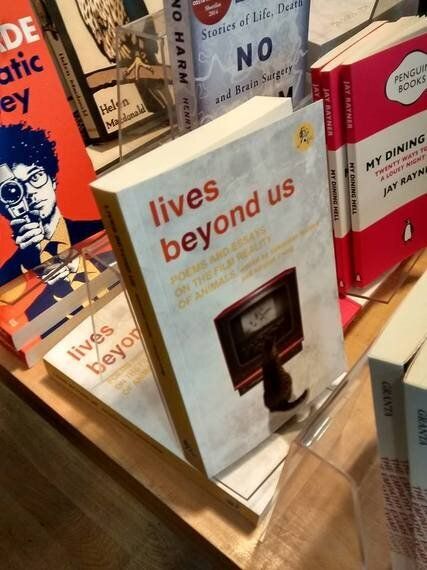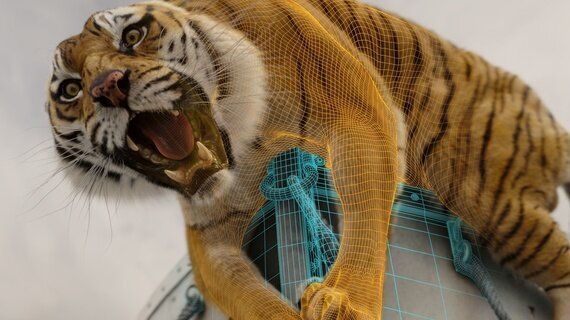
"You might not think that these two interests, capturing animals and writing poems, have much in common. But the more I think back the more sure I am that with me, the two interests have been one interest."
- Ted Hughes
If you want more from new poetry than the ten Faber poets that Waterstones are happy to take a punt on and the insufferably establishment-heavy 'Top 10' lists that the Guardian churns out from time to time, then I thoroughly recommend the Free Verse Book Fair.
Free Verse is the poetry community at its best. No in-fighting, no rigged awards, no Festival Hall posturing; just a beautiful grass-roots collective of indie presses peddling limited-run editions of books you are not likely to find elsewhere by obscure and established poets alike. You'll see the Tom Chivers, the Neil Astleys, the Todd Swifts and the Jane Commanes of this world shoulder-to shoulder, demonstrating what makes them a special breed of the human animal; their willingness to put their time, effort, sanity and financial stability aside for the sake of helping poets find an audience.
It's only in its fifth year as of 2016, but Free Verse feels more necessary than most events in the poetry calendar - not least of all because it serves as an IRL lightning-rod for a community which operates largely in the digital world. For the past three years, I have left the Conway Hall with an armful of small-press books; rare artefacts from a culture which is only rarely glimpsed in daylight.
This September, I left with one of my favourite books of the year; Lives Beyond Us, subtitled 'Poems and Essays on the Film Reality of Animals'. The book is a multi-disciplinary crossbreed from that wonderful purveyor of passion-projects, Sidekick Books. The book is curated by the film theorist, Sebastian Manley, and the poet, Kirsten Irving, who have commissioned some truly incredible meditations on the niche topic of cinematic representations of non-human animals.
There is an implied playfulness in producing a book about animals in movies, especially in a multi-disciplinary book with a witty blurb and a wealth of full-colour illustrations throughout its pages. There is certainly a playfulness behind Angela Cleland's screenplay-poem, 'Alien vs Jonesy', in which the poet considers the interplay between the eponymous Alien from the movie, and Jonesy the cat. It is also hard not to get caught up in the humorous whimsy of the revisionist film-history essay, Easy Rovers, Raging Fur Balls: How Animals Did a Wee-Wee on Hollywood and Humped Louis Mayer's Favourite Armchair.
But the inherent humour in filming animals comes from the fact that movie sets are sterile, meticulously controlled environments built on minutely recreating seemingly spontaneous events, and animals always introduce an element of chaos into this equation. This seemingly humorous quandary - how to impose a narrative on the behaviour of a non-sapient creature - is precisely what gives the essays in this book their emotional and intellectual punch.

In the first essay of the collection, Paul Wells poses us with the question of whether animals' behaviour should be manipulated by the language of cinema, or merely apprehended. The question of whether a human director can ever seek to anthropomorphise the behaviour of an animal and maintain moral artistic integrity is a question which reverberates throughout the essays in Lives Beyond Us. A real editorial flourish comes from Irving and Manley's choice to follow up Wells' thoughts on the CGI tiger in Life of Pi, with John Clegg's poem, 'Post-production', about a CGI orangutan:
"his pixels never quite cohere
along the jungle track, a backward
fall from knucklewalk to perch
to skin to frame to loading screen"
I found this to be one of the stand-out moments in the book where the poetry and academic criticism worked in mutual augmentation. Having participated in a multi-disciplinary book myself, I am acutely aware that an editor runs the risk of sacrificing credibility for novelty in such an endeavour, and it is only worthwhile to do so if the different art-forms encourage a constructive dialogue in comparison. In the case of Lives Beyond Us, the presence of the poems serves to further the argument being made by many of the essayists; cinema as an intrinsically human art-form is impotent to convey the honest experience of the non-human.
Behind the novelty and the fun of this book however, is some superb academic rigour and a highly impressive body of work which will leave readers genuinely intellectually engaged with the ethics of animal-representation in the media. I found Angela Hoffstetter's essay on Gender Trouble and The Horse Whisperer has vividly stayed with me long after my first reading; she provides an excellent introduction to the topic of horse-taming and the importance of the Robert Redford film in depicting the humane methods of natural horsemanship alongside the relatively violent 19th Century methods employed by John Solomon Rarey. Julie Ann Smith also provides an excellently constructed interrogation of David Lynch's typically alienating presentation of deer-hunting culture in A Straight Story.
We buy animals as pets for our children to foster basic human values and interpersonal skills; responsibility, nurturing, empathy, kinship, acceptance of mortality. Reading Lives Beyond Us has a similar intellectual effect. It is a novel about the misappropriation, manipulation, mistreatment, misrepresentation and wilful misunderstanding of entire species in popular culture, but in pursuing that endeavour so thoroughly and comprehensively, the book unavoidably becomes an intellectual fable of sorts. Kirsten Irving and Sebastian Manley have compiled an anthology of poems and essays which will broaden and deepen your ability to observe animals within moving image texts, but it will also help you to reconsider hegemony in all its forms and reconsider the narratives we impose on every 'other' we come into contact with.